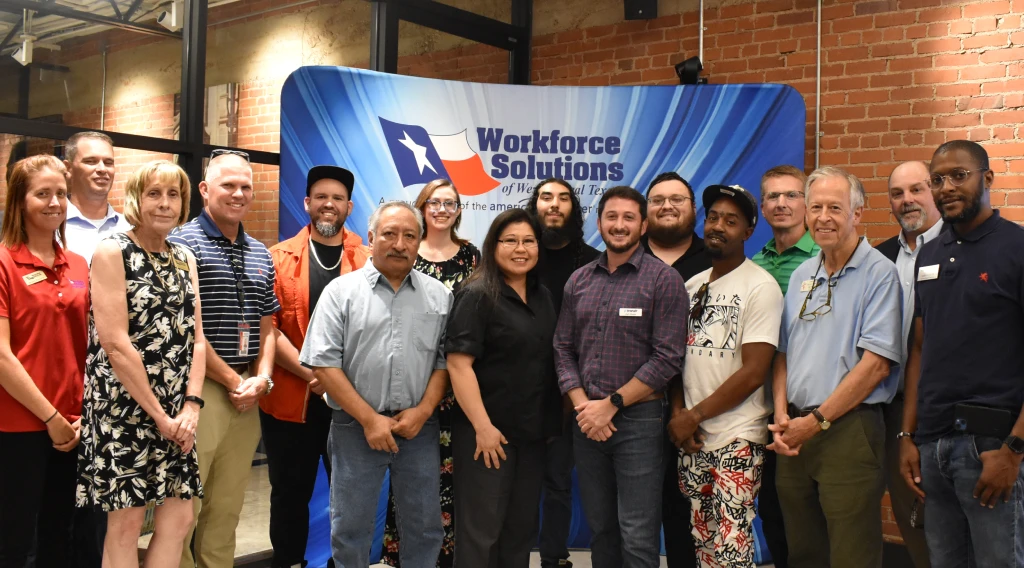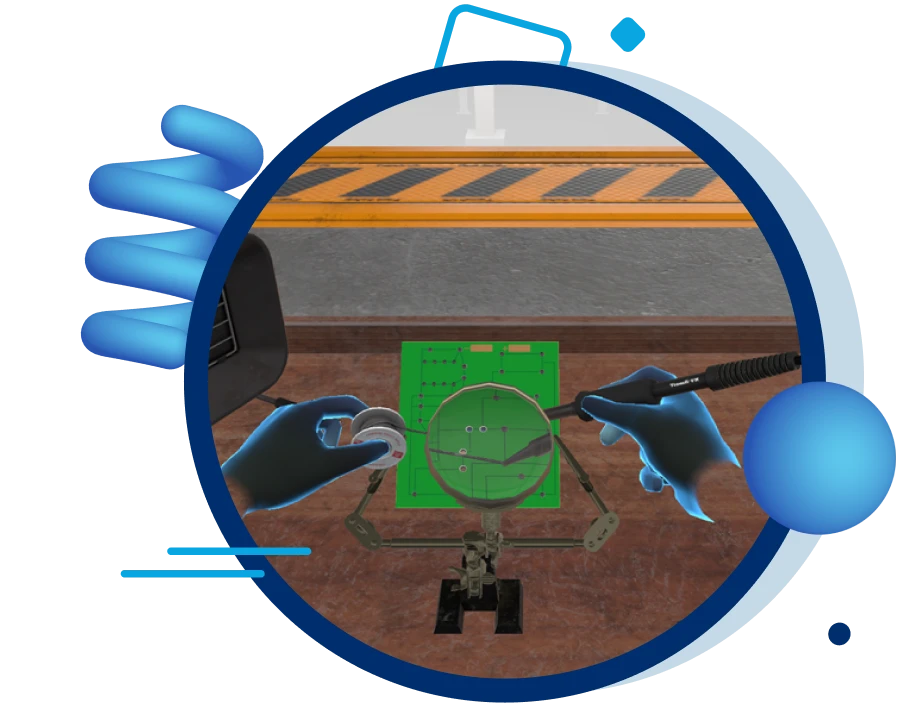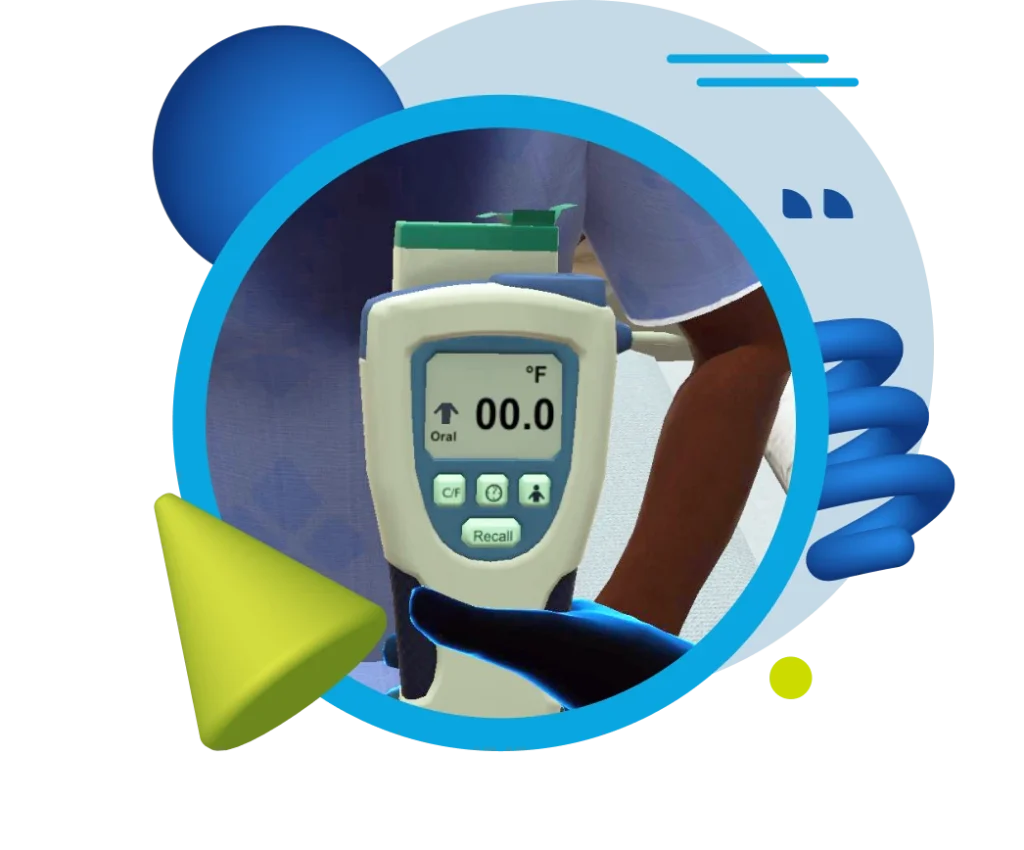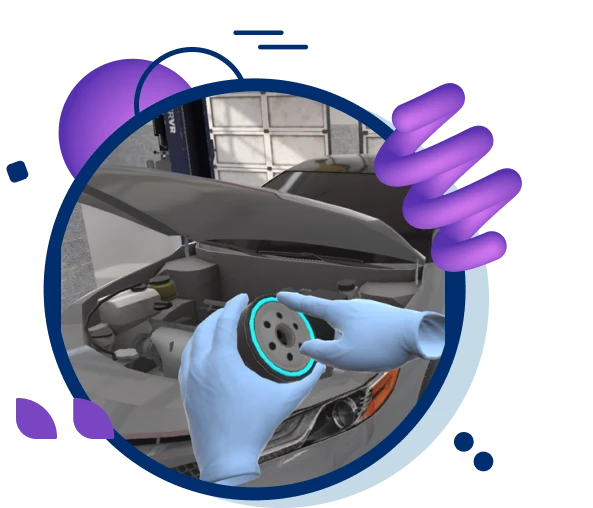Electrical Construction Rapid Training Program Changes Lives
Table of Contents
Executive summary
Transfr’s Electrical Construction Rapid Training (ECRT) program pioneers a powerful option for workforce development by providing flexible, technology-driven training. In partnership with Workforce Solutions of West Central Texas (WSWCT) and TRIO Electric, this seven-week hybrid program combines virtual reality (VR) simulations, elearning modules, and hands-on support to prepare trainees for electrical construction careers. The program successfully placed 71% of graduates into electrical construction jobs (others pursued further education or upskilled). VR simulations increased confidence, engagement, and real-world readiness, helping participants overcome barriers. The program highlights the power of innovation, flexibility, and community collaboration in bridging the skilled labor gap and creating meaningful career pathways.
| Stat Box | |
|---|---|
| Date started: June 2023 | Simulations completed: 400+ |
| Number served: 9 | Main use case: Skills training |
| Groups served: Adults | Industry focus: Electrical construction |

Using VR simulations was a game-changer. Trainees were able to gain confidence and familiarity with the tools and scenarios they would face on the job, and many found the process both engaging and empowering.
Jason Reeves
Program Facilitator
Bridging the skills gap with VR and community collaboration
The Electrical Construction Rapid Training (ECRT) program, powered by Transfr, demonstrated the amazing possibilities that collaborative networks of service providers, augmented with VR and elearning resources, can deliver. The ECRT program was made possible by the shared efforts of Workforce Solutions of West Central Texas (WSWCT), TRIO Electric, and local community organizations.
This innovative seven-week program combined virtual reality (VR) simulations, elearning modules, and hands-on guidance to prepare trainees for careers in electrical construction. By offering flexible, accessible training opportunities, the program addresses the urgent need for skilled tradespeople while empowering individuals from underserved communities.
How the ECRT program works
Launched in June 2023, the ECRT program is as a model for rapid, effective workforce development. Trainees complete a hybrid curriculum, engaging in 58 VR simulations on topics like Precision Measurement and Electrical Fundamentals, supplemented by elearning modules and wraparound support services. These include resume reviews, childcare assistance, transportation vouchers, and more, ensuring participants can overcome barriers to success.
Mixed-method research performed by the Transfr Learning Intelligence Team captured detailed feedback, revealing that trainees found VR highly engaging and instrumental in building real-world skills. Trainees’ confidence grew as they practiced unlimited repetitions in a safe, simulated environment, ultimately achieving an average test score of 90%.
Key outcomes highlight participant success
The program achieved a 78% completion rate, with all seven graduates securing positive outcomes. Placements included employment at Buffalo Gap Instrumentation & Electrical and EMA Electromechanics, matriculation into higher education, and promotions. Notably, 71% of graduates entered electrical construction roles directly, while others upskilled or pursued further training.
“We walk a fine line between needing new talent and trying to recruit older, more experienced talent,” says Cutter Flatt, Division Manager at Buffalo Gap. “From our perspective, there just aren’t enough high-quality entry-level people. I think anything people are willing to do to find those motivated people for sure has value from an industry perspective.”
Trainee feedback highlights the program’s transformative impact. One participant expanded their career interests beyond manufacturing after using VR simulations, while another noted how VR reduced intimidation during mock interviews and on-the-job tasks.
Other statistics:
- 89% of the trainees identified as Hispanic, with the remaining 11% identifying as Black or African American.
- The trainee group included 22% women and 78% men.
- 78% of the trainees had either a high school diploma or had not completed high school.
- 67% of trainees had no prior experience using VR for learning, but 100% had a positive attitude toward it by the program’s conclusion.
- Among program graduates, the average test score was 90%.
- 80% of trainees reported learning more effectively from VR simulations compared to elearning modules
Innovation and perseverance pay off
People who understand the challenges of a specific industry are uniquely positioned to evaluate its effectiveness in replicating live worksites and teaching essential skills. Jason Reeves, the program’s facilitator, praised VR’s ability to simulate hazardous environments safely, enabling trainees to gain hands-on experience without real-world risks:
“Using VR simulations was a game-changer,” says Jason Reeves, program facilitator. “It allowed participants to get a feel for real-world tasks without the risks involved in a traditional training environment. The trainees were able to gain confidence and familiarity with the tools and scenarios they would face on the job, and many found the process both engaging and empowering.”
Program facilitators and partners also emphasize the importance of flexibility in making initiatives like this successful. By adapting to learners’ needs with technology access, hotspots, and gas cards, the program maintained high engagement and retention.
“Flexibility was key,” says Bill Dean, Director of Business Services for WSWCT. “Life happens, and we understood that trainees needed options to succeed. By providing resources, we ensured that they could overcome personal challenges and stay engaged in the program. This adaptability was a crucial to maintain high retention and completion rates.”
The ECRT program also demonstrates the power of community collaboration. Partners like Christian Services and Goodwill played a critical role in recruitment, targeting individuals in low-paying jobs and providing them with pathways to high-growth careers.
“This training gave them a chance to prove their commitment and capabilities,” notes Jeff Howle, Director of Adult Education for WSWCT. “This program provided participants with a way to demonstrate their potential, build confidence, and step into roles that offer long-term growth and financial stability.”
VR helps set up ECRT graduates for long-term success
The success of the ECRT program underscores the potential of VR-powered training to meet industry demands and uplift communities. By combining cutting-edge technology with personalized support, Transfr and its partners are creating career pathways for traditionally underserved populations, demonstrating that perseverance and innovation can transform lives.
“I believe it was during our mock job interviews when the students realized how closely the VR simulations they’d been learning from resembled the actual work they’d be doing,” says Jason. “Several students said they were less intimidated when they went through tasks because of the VR exposure in the classroom.”



Table of Contents
VR Career Exploration Reveals New Career Paths for Youths
VR Career Exploration Reveals New Career Paths for Youths